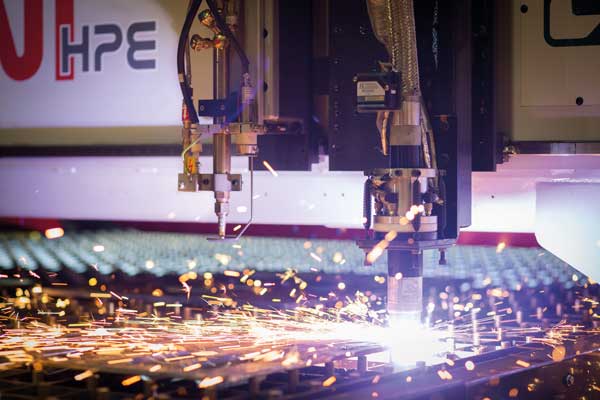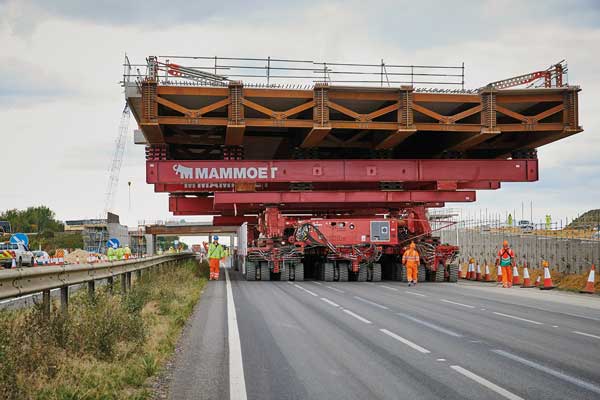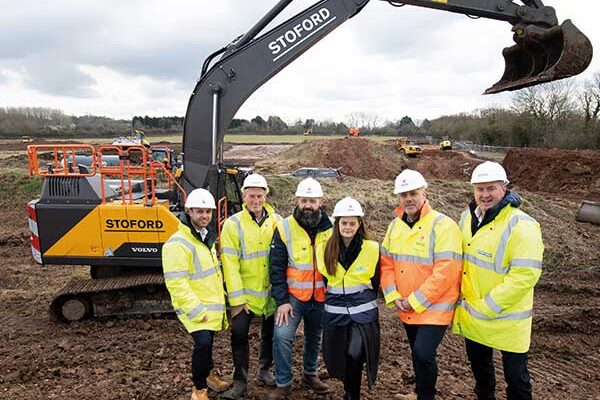Projects and Features
A guide to steel production equipment
Steel manufacturing equipment and its producers play an essential role within the structural steelwork sector.

Steel manufacturing equipment is indispensable and extensively used in steelwork contractors’ workshops as well as by steel stockholders, helping the companies produce structural steelwork efficiently and cost-effectively.
One of the most notable innovations of late has been the push towards fully automated equipment and robotics, that have reduced the reliance on manual operations, improved output and reduced labour.
In this article, NSC looks at some of the common functions carried out by this equipment, developments within the sector and the close ongoing working relationships between steelwork contractors and machinery suppliers.
Cutting and drilling
In the fabrication factory or steel service centre, one of the first operations is to cut the sections to length and profile the plates to the desired size or shape. This can be done in a number of ways using a range of automated machinery; band saws which are generally used for cutting to length, oxy/gas cutting which can be used to cut components from thick steel plate; components can also be cut efficiently by plasma arc systems. To maximise efficiency, all holes are pre-drilled or punched using automated equipment in the fabrication factory, which allows components to be rapidly bolted together on site.
Blast cleaning and auto-painting
For many steelwork contractors, sections and plates are blast cleaned prior to fabrication, although some choose to carry out the blast cleaning after the sections are cut to length. Shot is fired at the steel surface which displaces dirt and mill scale, and also mildly indents the steel creating a “rough” surface. Manufacturing equipment with auto-painting functions mean that prefabrication primers can be applied immediately after blast cleaning. This immediate application maintains the reactive blast cleaned surface in a rust-free condition through the fabrication process until final painting can be undertaken.
Multi-function machinery and workshop design
Equipment manufacturers are increasingly offering multi-function machines, which combine a number of the processes outlined above. In addition to offering multi-function machinery, manufacturers of steel fabrication equipment work closely with steelwork contractors, planning the workshop design and layout with real time simulations using advanced software to find the best flow of materials and maximise production, based on the required output.

CNC Machinery
Computer Numerically Controlled (CNC) machinery is the standard in structural steel fabrication today and is seamlessly integrated into each stage of the fabrication process. Such integration has been assisted by the steel construction sector’s experience and track record having used 3D design software for over 25 years.
The process may vary between each steelwork contractor, but will generally commence with the efficient and seamless transfer of 3D model information from the design office to the equipment in the workshop. Prior to the adoption and integration of CNC and advancements in automated steel fabrication, manual methods were limiting, laborious, more costly and less accurate. CNC machinery provides a number of added value benefits to the steelwork contractor including; less material wastage, faster production and increased safety through reduced material handling.
To maximize the efficiency of CNC machinery it is best to specify: single end cuts, arranged square to the member length, eliminating set up time needed when changing to another angle or cut; one hole diameter on any one piece, which avoids the need for drill bit changes; and alignment of holes on an axis square to the member length, holes in webs and flanges aligned, reducing the need to move the member between drilling operations.
Scribing marking technologies
The structural steelwork sector is also seeing the adoption of modern scribe marking technologies. This software allows for full or partial contours to be scribed directly onto the steel to indicate the position of the parts that need to be welded, saving valuable time and minimising errors. In addition, information can be marked on the steel indicating quality, traceability, welding information and assembly details. The ability to use modern scribe marking has many benefits including supporting the structural steel sector’s contribution to tackling the climate emergency through providing information on steel sections within buildings that could be reused in the future which supports the sectors move towards circular thinking.
Robotics
The sector is moving towards the adoption of full automation of all processes on the factory floor, utilising robots or cobots (collaborative robots) where humans and robots work together with direct interaction in a defined workspace to reduce material handling and welding. Some steelwork contractors are already moving into robotics. It’s a natural progression due to the early adoption of 3D computer modelling by the sector as a whole.
The close working relationship of the machinery provider and steelwork contractors to plan their workshops becomes evermore important as robots require room. Specifically, they require open floor space to accommodate all their axes of movement and additionally require protection, be it by light curtains or fencing for employee safety.
The use of robotics in steel fabrication can save time and the nature of the technology also lends itself to tasks that require repeatability. In addition to the operational and economic benefits, it can also ensure workers are safer by handling some of the tougher tasks.
Post-sale support
After sales is another area which has seen a number of advances in recent times. Once a customer has invested in a new machine or processing line, it wants to be sure it works and continues to work properly. To this end equipment manufacturers now employ more technicians to help with after sales support.
In addition to the standard warranty, which comes with any new piece of machinery, equipment manufacturers also offer a range a service contracts. The basic elements of each contract usually include the servicing of machines, restoration of factory settings, reduction in the cost of spare parts and a full-service history for the machine.
Not only do such contracts provide customers with peace of mind, but they also have the option of deciding exactly what level of service they require, allowing the servicing costs to be accurately budgeted in advance.
Remote diagnostics is now integral as it allows technicians and service engineers to repair equipment without actually visiting the customer. As long as there is a computer link, a technician can fix an item of machinery from anywhere in the world. This saves time and means repairs are executed faster. This has also been an essential aspect of maintenance during the current pandemic.
Training is an important element for any new piece of machinery. Manufacturers often offer a training programme for a customer, which may also include a visit to the production facility. This allows the future operative the chance to see the machine being built as well as observing it in full production mode.
Summing up, Ficep UK Managing Director Mark Jones says: “Investment in automated technology can add many advantages to a business, it helps attract employees, provides future opportunity for the current workforces, improves productivity and quality, as well as giving a reduction in overhead costs and availability of better production data from software implementation.”
Sponsors
Manufacturing equipment
Gold: Ficep UK Ltd
Silver: Peddinghaus Corporation,
Bronze: Kaltenbach Limited, Voortman Steel Machinery














